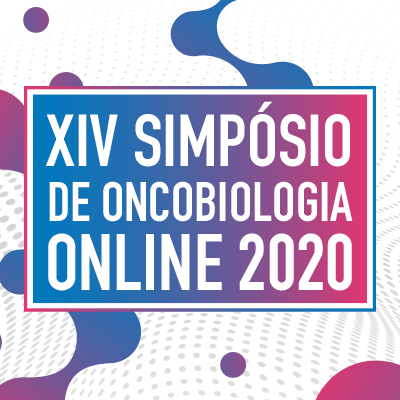Proceedings of Oncobiology Symposiums
Proceedings of XIV Oncobiology Symposium
IN-DEPTH ANALYSIS OF ABERRANT GLYCANS EXPRESSED IN MURINE COLON CANCER CELLS CULTURED IN DIFFERENT GLUCOSE CONCENTRATIONS
How to cite this paper?
To cite this paper use one of the standards below:
How to cite this paper?
INTRODUCTION AND OBJECTIVES: Tumor cells have an increased uptake of glucose. This behavior is known to be necessary to fulfill their goal of rapid growth and to supply their intense metabolic needs. This phenomenon has been widely observed in conditions close to normoglycemia (or low-glucose, LG, 5 mM) in vivo or in cells cultured at high glucose concentrations (HG, 25 mM) or unknown concentrations in vitro, but not much had been done to evaluate the difference between these two conditions, which is relevant for metabolic diseases such as diabetes, nor the effects of these different glucose concentration on the cell surface glycans. Previously we’ve shown that murine colon cancer cells (MC38) cultured in HG have a higher proliferation and invasion rate while presenting an abnormal cell surface glycosylation profile evaluated through a lectin’s array assay using flow cytometry. Our goal with this study is to provide an in-depth of the glycosylation of membrane proteins of colon cancer cells through mass spectrometry. MATERIAL AND METHODS: As glycans mass spectrometry has never been done within the facilities of the Centro de Espectrometria de Massas de Biomoléculas (CEMBIO), we first have to setup a working protocol. Briefly, MC38 cells were cultured in LG or HG and their membrane proteins were extracted by various methods, reduced, alkylated, digested by Trypsin and the N-Glycans were removed by PNGase or hydrazine using different workflows. These glycans were purified and tagged with procainamide and subjected to Matrix Assisted Laser Desorption Ionization Mass Spectrometry with a Time of Flight (MALDI-TOF) or Magnetic Resonance (MALDI-MRMS) detector or liquid chromatography associated with an Electrospray Ionization Mass Spectrometer (LC-MS). The data was analyzed using Bruker Compass Data Analysis and Glycoworkbench. RESULTS AND CONCLUSION: Protein extractions were done by different methods and whole cell lysates have been shown to be the more consistent and efficient method, when compared to freeze-thaw cell lysis for membrane purification or density gradient ultracentrifugation. Multiple methods were used to extract glycans, and PNGase F in-solution digestion provided a more efficient extraction when compared to in-membrane digestion or hydrazine in-solution chemical extraction. A novel method involving whole cells shaving of glycans has been successful, though only with non-adherent cells. With this, a valid workflow has been established and further experiments can be made in order to evaluate the differences between glycans from MC38 cells cultured in LG and HG. The novel method is promising, since it allows for further analysis of the “shaved” cells through commonly used tools such as flow cytometry, but needs to be further refined.
Expressão de glicanos por células MC-38
Juliana Maria Motta
Você descreve uma metodologia para purificar glicoproteínas expressas na membrana de células tumorais e, com isso, pretende avaliar as diferenças na expressão de glicanos de células em normoglicemia x hiperglicemia, correto? Quais são os GAGs já descritos e expressos pelas células MC-38?
- 6 answers
- 1 Universidade Federal do Rio de Janeiro
- Metabolism and Glycobiology
Streamline your Scholarly Event
With nearly 200,000 papers published, Galoá empowers scholars to share and discover cutting-edge research through our streamlined and accessible academic publishing platform.
Learn more about our products:
How to cite this proceedings?
This proceedings is identified by a DOI , for use in citations or bibliographic references. Attention: this is not a DOI for the paper and as such cannot be used in Lattes to identify a particular work.
Check the link "How to cite" in the paper's page, to see how to properly cite the paper


Hector Franco Loponte
Neste momento estamos avaliando as N-glicanas, que é um outro tipo de modificação pós-traducional de proteinas de superfície. No entanto, já foi descrito que as proteoglicanas e suas GAGs tem um papel no remodelamento da matriz extracelular e modulação do microambiente tumoral e por isso seria muito interessante analisarmos elas no futuro. Mas, infelizmente não foram descritas na literatura as GAGs produzidas especificamente pelas células MC38.
Juliana Maria Motta
Qual a diferença desses N-glicanos vcs já observaram em relação à hiperglicemia x normoglicemia?
Juliana Maria Motta
Quanto tempo em hiperglicemia é necessário manter essas células para observar mudanças de N-glicanos e aumento da proliferação e invasão? E o retorno para normoglicemia faz as células recuperarem o fenótipo anterior em termos de glicanos? Em quanto tempo?
Hector Franco Loponte
Já observamos um aumento na quantidade total de N-glicanas nas células em condições hiperglicemicas de cerca de 4x a quantidade encontrada nas celulas em normoglicemia. Vimos, junto com isso, um aumento na proporção de glicanas oligomanoses (características de estágios tumorais mais avançados) e um aumento de N-glicanas fucosiladas e sialiladas, que tem papel conhecido na invasão de tecido e evasão do sistema imune, respectivamente.
Em um trabalho anterior, a partir de 24h ja foram percebidas diferenças nas glicanas de superficie (por lectinas, então podem ser oligossacarideos de N-glicanas, O-glicanas, glicoesfingolipideos, etc). Essa diferença chega a um patamar em aproximadamente 48 horas. Não sabemos se essas alterações podem ocorrer em tempos distintos para as diferentes formas de glicanas. Quanto a proliferação e invasão, só observamos as células após 48 horas em hiperglicemia, então não saberia lhe dizer.
Sim, o retorno a normoglicemia é capaz de retornar o glicofenotipo, mas não sabemos em quanto tempo. Observamos o retorno somente após 48 horas ou mais.
Juliana Maria Motta
Vc está trabalhando nesse projeto há quanto tempo?
Hector Franco Loponte
Com hiperglicemia no câncer de cólon murino trabalho há cerca de 6 anos... No meu mestrado tenho focado esta parte de massas que apresento aqui, e trabalho nele há cerca de 1 ano e 5 meses.